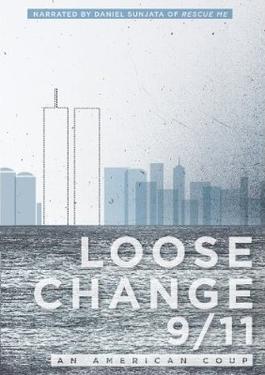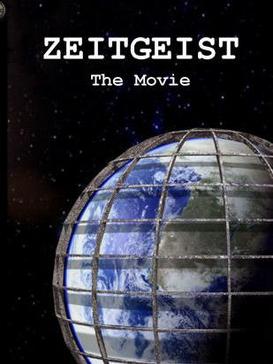One might think that there aren’t many conspiracy theories about Christmas, and one would be wrong. Today, however, I will not talk about them. Rather, I hope to show you something that rarely gets an in-depth look in book in books on conspiracy theories: their production and audience. To do so, I’ll with some words about one of the most influential conspiracist movies: the Zeitgeist trilogy, produced by Peter Joseph. Not only is it a good illustration, but it mentions Christmas.
The first part of the trilogy, entitled simply Zeitgeist: the Movie, released in 2007, became a phenomenon in itself. Millions of people watched it on Google Videos, and in a sense it paved the way for other such feature-length “alternative” documentaries that, while not “fit” for mainstream distribution, made their success on being easily available to anyone with an Internet connection, and for free. Not only that, the general Internet-savvy demographic overlapped with each other, bumping the statistics. But what made the first Zeitgeist’s success were the conspiracy theories.
The documentary consists of three parts, all of them barely related for the inattentive reader. The first is one of those “heavy-duty” eye-openers: Jesus Christ did not exist, at least not in the form we know today. A big claim to make, to be sure, but Zeitgeist strives to prove, step by step, that the story presented in the Bible is just a reinvention of an ages old myth about a Sun Deity, present in virtually any culture. That would be quite ok, if not for the fact that since the advent of Christianity as a state religion in the Roman Empire, it had become a tool for manipulating the masses.
The second part is probably the most well known; I have colleagues for whom this is the 9/11 Truth documentary (however untrue it might be). This section gives the almost classic by this time “inside job” theory, claiming that the U.S. government could stop the attacks, but chose not to for personal gain. Together with Loose Change it became the most widely watch documentary about the alternative views on 9/11.
 Finally, the third part is a head-on critique of the current economic system, with claims that it essentially is the root of all evil. Not only does it thwart creativity, as we do only the things that can become profitable and we make no innovations unless we get paid, but also drives the governments and “international bankers” to lie to the people, cause wars and suffering for the sake of profit, and many other. The movie ends with a relatively short description of the “Venus Project” headed by Jacque Fresco, which it lauds as one of the ways to escape the current vicious circle of monetary economy.
Finally, the third part is a head-on critique of the current economic system, with claims that it essentially is the root of all evil. Not only does it thwart creativity, as we do only the things that can become profitable and we make no innovations unless we get paid, but also drives the governments and “international bankers” to lie to the people, cause wars and suffering for the sake of profit, and many other. The movie ends with a relatively short description of the “Venus Project” headed by Jacque Fresco, which it lauds as one of the ways to escape the current vicious circle of monetary economy. The documentary was peculiar in its reception. The first part got a lot of flak for inaccuracies, quite justifiably, as it did simplify a lot, and in some places outright twisted the facts to fit the thesis. The second part made it popular and memorable; in 2007 Dylan Avery’s Loose Change went into its “final cut” version, and Zeitgeist provided “more of the same”, but in a new ideological package. Moreover, Avery paved the way for Joseph, and by 2007 the widely understood 9/11 Truth organizations became a respected, if notorious, social phenomenon. The third part, the real crux of the whole movie, the original thesis, the “new thing” (at least for the popular audience, as Joseph’s theories are not something new, only presented in an accessible way) was largely ignored. In 2007 the War on Terror was all the rage. But then the late 2008 happened.
 In interviews and statements Peter Joseph claimed that the first two sections of Zeitgeist: The Movie were to demonstrate the specific pathological effects of the money economy. If they were, this demonstration was unnecessary after the 2008 market crash. The next two movies, Zeitgeist: Addendum from 2008 and especially this year’s Zeitgeist: Moving Forward needed no such examples. Both of them strongly downplayed the conspiracy theory element, with the last one even outright ridiculing those who claimed that to change the world one must expose some nefarious conspiracy. So why was this element dropped? Probably it was never the focus, but was used to win over an Internet so keen on new conspiracy theories. Now the audience knew that the bankers were evil. People became hooked, the name got exposure in the media, so now Peter Joseph would go for the real deal.
In interviews and statements Peter Joseph claimed that the first two sections of Zeitgeist: The Movie were to demonstrate the specific pathological effects of the money economy. If they were, this demonstration was unnecessary after the 2008 market crash. The next two movies, Zeitgeist: Addendum from 2008 and especially this year’s Zeitgeist: Moving Forward needed no such examples. Both of them strongly downplayed the conspiracy theory element, with the last one even outright ridiculing those who claimed that to change the world one must expose some nefarious conspiracy. So why was this element dropped? Probably it was never the focus, but was used to win over an Internet so keen on new conspiracy theories. Now the audience knew that the bankers were evil. People became hooked, the name got exposure in the media, so now Peter Joseph would go for the real deal. In the grander scheme of things, Zeitgeist demonstrates one thing: conspiracy theory is a product. Like a logo, a catchy tune, or a witty advertisement it can help to sell a product. And it does so through the same mechanism as your favourite brand: familiarity. People who went to watch Zeitgeist already knew most, if not all, of the theories about 9/11 presented therein. Yet still they watched. Perhaps they wanted to hear their convictions reiterated by an authority, or perhaps they simply liked the narrative. Maybe they simply did not want anything changed. The same mechanism makes conspiracy theories so frequently used in popular fiction, from novels to computer games. Like a primal myth, an archetypal scenario, we love to watch it repeated endlessly, for it reaffirms our view on the world (which does not mean such people are “crackpots” or “conspiracy buffs”, a future post will try to prove).
 |
| Fluoridation - From poisoned wells to poisoned vaccines |
We, the audience (if not believers) accept or reject the content, we click the “like” or “dislike” buttons, but we watch. Like with the “adult” or modernised or steam-punk or science fiction retellings of the Tales of Brothers’ Grimm or Shakespeare plays, we do so not to learn something new, but because we want someone to tell us again about the cowboys and the Indians, the gangsters and the feds, about how good will ultimately triumph over evil...
Merry Christmas.
Merry Christmas.

No comments:
Post a Comment